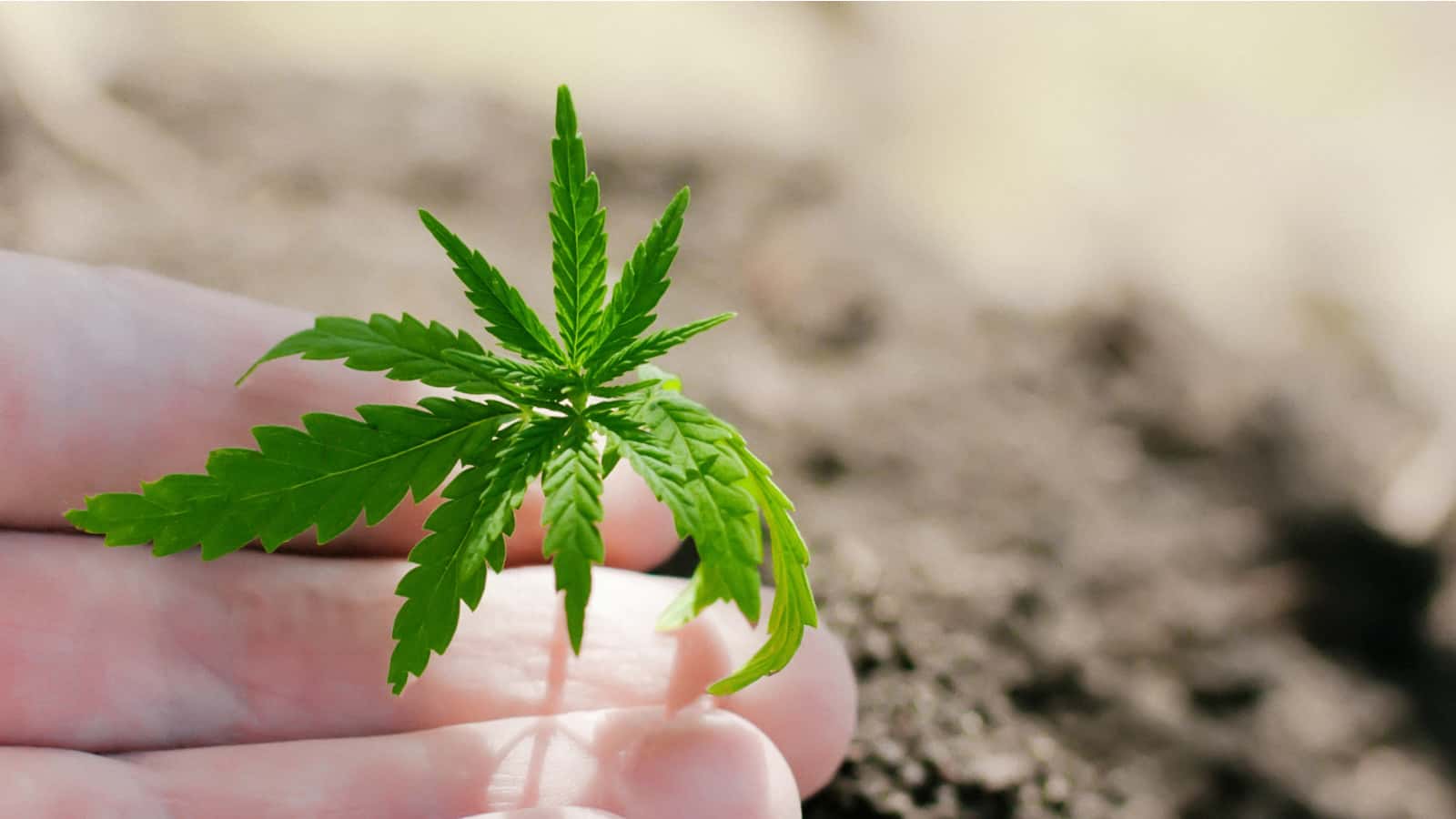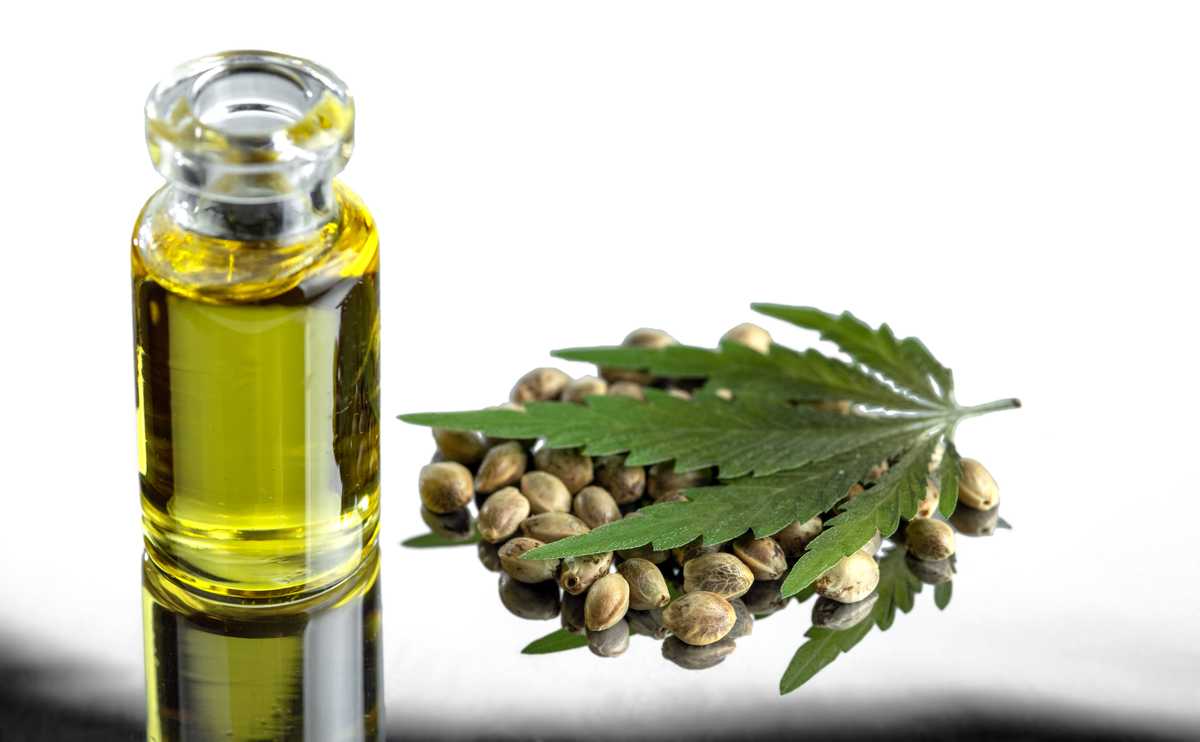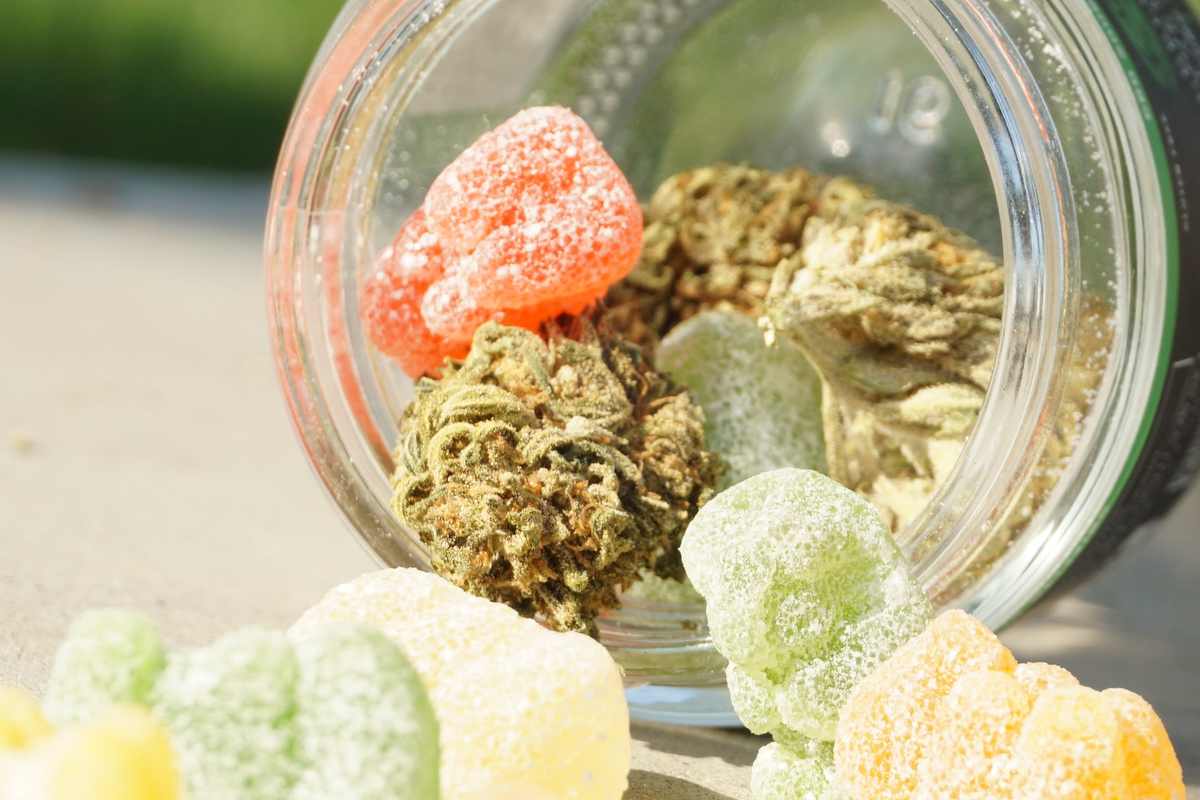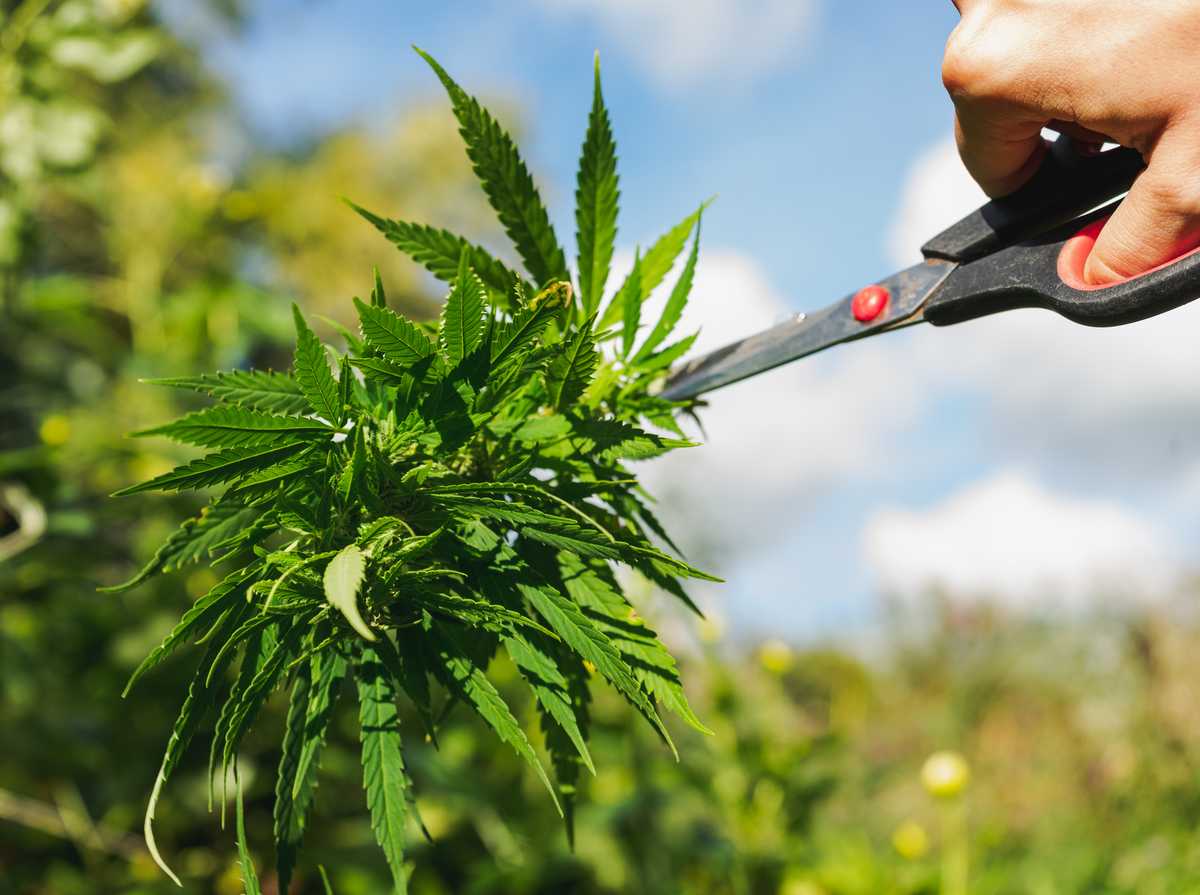
How To Grow Organic Marijuana Plants In Australia
- How To Create Organic Living Soil
- How To Keep My Organic Soil Alive?
- Should I Put My Cannabis Plants In Garden Beds or Pots?
- Organic Macronutrients
- Organic Micronutrients
- Organic Cannabis Plant Nutrition
- Cannabis Fertilisers: Organic VS Chemical Fertiliser
- How To Provide Organic pH To Cannabis Plants
- Organic Compost For Cannabis Plants
- Should I Use Manura In My Soil?
- Feeding Organic Food To Your Cannabis Plant
- Using Foliar Sprays To Feed Your Cannabis Plants
Contrary to popular belief, organic cannabis can produce better yields and higher levels of CBD and THC than their synthetic chemical (PGR) counterparts.
Growing organic cannabis in Australia involves:
- composting to create living soil
- Applying living soil directly to the roots of your plant
- Applying your organic fertiliser directly onto your plant leaves
Organic cannabis is the process of naturally cultivating marijuana plants by creating high-quality natural soil and a biodiverse array of bacteria that support the growth and flowering phases.
Table of Contents.
How To Create Organic Living Soil
Your cannabis plant has a large demand for macronutrients and micronutrients. To avoid any nutrient deficiencies and diseases, we need to provide cannabis plants with a healthy balanced diet.
Cannabis plants release sugars into their root zone (rhizosphere) to attract bacteria and fungi that then break down organic matter to nutrients that benefit your plant.
In order to create exceptional organic living soil that produces helps marijuana plants grow to the fullest potential, you will need:
- Worms: Everyone knows that good soil has worms, but what do they do? Earthworms in Australia offer increased nutrient availability, better drainage and a more stable soil structure for your cannabis plants to thrive in.
- Bacteria: bacteria thrives in highly acidic soil and helps keep your soil particles stuck together. This then gives a better structure for your plant roots to grow in.
- Fungi: gives the soil a more robust structure that keeps it from washing away in the rain. They can also improve your plant roots ability to absorb nutrients.
- Protozoa: are one of the essential bacterias found in soil. They provide nutrients for your cannabis plants, and they also promote faster growth of other bacterias in your root zone.
- Nematodes: transform nutrients in the soil to a form better suited to your cannabis plant. Some harmful types of nematode bacterias eat your roots.
How To Keep My Organic Soil Alive?
Your perfectly balanced organic soil won’t stay that way forever, so it’s essential to learn how to maintain and preserve your soil’s organic life.
1. Buy High-Quality Organic Soil
You can buy high-quality organic soil from Bunnings in Australia. The idea behind organic soil is that you maintain it and grow it over time so that each time you use it to grow cannabis, it gets better. Like a fine whiskey, it ages well if you look after it.
2. Avoid Digging and Tilling Your Organic Soil
Keeping your organic soil undisturbed while it develops is very important. Avoid digging and tilling your organic soil as it can disrupt the balance and kill some of the precious worms, fungi and bacteria. Most of your soil’s “life” is below the surface, and they survive by avoiding UV rays from the sun.
3. Avoid Chemicals, PGR, Pesticides, Fungicides And Herbicides
Your organic soil can easily be destroyed by using any chemicals. The ecosystem of bacteria, fungi and worms that you have spent ages developing can be easily destroyed by bombarding the soil with intense chemicals.
4. Organic Fertiliser Only! Avoid Chemical Fertiliser
Chemical fertiliser destroys the balance of life that you have created in your living organic soil. Life is sensitive, and chemicals from synthetic fertiliser may kill vital bacteria and fungi necessary to provide all the right nutrients to your cannabis plant.
Should I Put My Cannabis Plants In Garden Beds or Pots?
This is all about preference, as you can create organic soil for cannabis plants in both garden beds and pots.
Garden beds are bigger and deeper, so you can create a larger environment for organic living soil to thrive within.
The downside with garden beds is they are locked into their spot and vulnerable to insects, rain, summer heat, etc.
Pots provide micro-environments to create organic living soil. These are wildly popular as you can easily relocate your cannabis plants.
The negatives with pots are that you have to create organic living soil in each container, and each environment is isolated.
If you choose pots, look for fabric pots in Australia as they retain water and promote aeration.
Organic Macronutrients
Macronutrients are required in large quantities by cannabis plants and are often compared to carbs, fats and proteins in the human diet. How can we get macronutrients to our cannabis plants in an organic form?
| Macronutrient | Benefits | Organic Source |
|---|---|---|
| Nitrogen (N) | Plant Growth | Worm castings, Manure and Seaweed |
| Potassium (P) | Photosynthesis, CO₂ and ATP Production | Wood ash, Greensand and Kelp Meal |
| Phosphorous (K) | Sugar Transformation, Nutrient Transport and Genetics | Rock Phosphate, Manure and Bone Meal |
Organic Micronutrients
Micronutrients are compared to vitamins for humans, and each one plays a critical role in making your cannabis plants grow, flower and function properly.
If you are missing micronutrients, you will visually see the effects in your plant and leaves.
| Micronutrients | Benefits | Nutrient Deficiencies Found In |
|---|---|---|
| Boron | Pollination and Seed Development, And Supporting Cell Wals and Division | Organic Compost |
| Calcium | Growth, Reduces Salinity, and Improves Water Penetration | Egg Shells |
| Copper | Photosynthesis, Key Enzymes and Metabolism | Organic Compost and Manure |
| Iron | Metabolism, Chlorophyll, Chloroplast and DNA Synthesis | Manure, Seaweed and Greensand |
| Magnesium | Chlorophyll and Photosynthesis | Organic Compost |
| Manganese | Photosynthesis, Nitrogen, Germination and Root Health | Seaweed |
| Molybdenum | Creates Ammonia and Supports Nitrogen-Fixing Bacteria | Kelp Meal, Neem Meal, Wood Ash, Greensand and Molasses |
| Sulphur | Enzymes and Protein Synthesis | Manure, Straw and Hay |
| Zinc | Enzymes, Proteins, Growth Hormones and Internode Elongation | Kelp Through Foliar Spray |
Organic Cannabis Plant Nutrition
Providing nutrients to your cannabis plant is all about creating a healthy organic living soil and ensuring that you have a balanced diet of macronutrients and micronutrients.
Buying high-quality and rich organic soil allows you to kick start your journey towards creating living soil for cannabis plants.
Creating living organic soil from scratch is no easy task, and local stores sell pre-prepared organic soil that allows you to start growing cannabis plants quick and easy.
When you start growing organic cannabis, you need to ensure that your soil has a steady supply of:
- organic compost
- worm castings
- other forms of organic nutrient-rich matter
Cannabis Fertilisers: Organic VS Chemical Fertiliser
Fertilisers are the products you buy from Bunnings that you add to the soil to pump it full of nutrients that your cannabis plant needs to grow.
You have a choice between organic and chemical fertilisers that you can add to your soil.
[Organic fertilisers](https://www.agriculture.gov.au/import/goods/fertiliser/org are created from organic matter that has slowly broken down over time into nutrients suitable for your plant.
[Chemical fertilisers](https://www.agriculture.gov.au/import/goods/fertiliser/chem-mined are created in bulk from petroleum and other chemicals.
Whether you choose an organic or chemical fertiliser, your cannabis plants are going to be absorbing nutrients from your soil, and if you don’t replenish your soil, then it will be drained of nutrients.
Organic Fertilisers For Cannabis Plants
Organic fertilisers take longer to make, but they contain all the natural nutrients and minerals required for cannabis plants to grow.
Living bacteria and fungi in your organic soil help break down minerals and nutrients in your organic fertiliser into a more digestible form for your cannabis plants.
The benefits of using organic fertiliser to grow cannabis plants in Australia include:
- free of any harmful chemicals
- creates and supports living organic soil
- quicker absorption through compost tea, worm juice and other concentrated preparations
- natural organic matter
The negatives with organic fertiliser, include:
- expensive and time-consuming
- complicated process to create concentrated preparations or organic fertilisers
Chemical Fertilisers For Cannabis Plants
Chemical fertilisers include all the right macronutrients and micronutrients for your cannabis plant to grow. These are not as popular as they are artificial and may include additives that can be harmful to the plant and potentially make the cannabis plant toxic for human consumption.
The benefits of using chemical fertiliser to grow cannabis plants in Australia include:
- accurate and measured dosages
- easy to absorb
The negatives with chemical fertiliser, include:
- can create highly-acidic soil
- potentially kills organic life in the soil
- potentially damages the plant
- causes pollution
How To Provide Organic pH To Cannabis Plants
pH is a part of the regular monitoring of your cannabis plant’s soil. Cannabis plants typically thrive between a 6.0 to 7.0, or 5.6 to 6.5 if you are growing hydroponics or soilless.
If your soil is outside of these perfect ranges, you can starve your cannabis plant as the roots are not able to absorb nutrients effectively.
You can measure pH levels in your organic soil using a simple pH tester device.
Here is what to do to fix your pH balance in organic soil for your cannabis plants.
| pH Levels | Soil | How To Fix |
|---|---|---|
| pH Below 6.0 | Highly Acidic Soil | Baking Soda |
| pH Above 7.0 | Highly Alkaline Soil | Vinegar or Lemons |
You can add a small amount to a litre of water and slowly feed this to your cannabis plant. An example of this is to add one tablespoon of baking soda to a litre of water and slowly to feed this to your cannabis plant.
Organic Compost For Cannabis Plants
Composting is an age-old process of taking food leftovers and letting the organic matter naturally breakdown into the nutrients and minerals needed for plants for growing.
There are different types of composting, and each method eventually creates an organic compost that can be used on your cannabis plants.
Worm Composting
Composting worms assist in breaking down organic matter into nutrients and minerals that your cannabis plants can easily absorb.
All you need to get started is a regular supply of leftovers and organic scraps, a large container or bin, and composting worms.
This process is faster and more effective, and once you get started, you have continuous production of composting worms and organic compost that can be used to grow high-quality cannabis plants.
A byproduct of organic compost made with composting worms is “worm juice”. Worm juice, otherwise known as “worm pee” or “worm tea”, is a liquid that is loaded with all the perfect minerals and nutrients needed to create the ideal organic soil for cannabis plants.
Slow Composting
Slow composting is a simple method of breaking down organic matter into a natural fertiliser full of all the right nutrients and minerals for your cannabis plants.
You require a mixture of green materials that supply nitrogen and brown materials that provide carbon.
When slow composting, you should aim to have 30-50% green materials and 50-70% brown materials. A perfect balance of materials allows for the growth of aerobic microbes.
Green materials used in slow composting includes:
- seaweed
- animal manure
- grass
- vegetables
Brown materials used in slow composting includes:
- carboard
- woodchips
- straw, hay and dead leaves
Slow composting is, well, slow, and can take a few months before it produces its first successful batch. After this, you can have a repeating flow of nutritious fertiliser for your cannabis plants.
Should I Use Manura In My Soil?
Cannabis plants are not above manure, as it contains macronutrients that helps plants grow. The most common type of manure used in the soil is from horses, cows, sheep and chickens.
Note: fresh manure has intense levels of nitrogen and can damage your plant. You need to give your manure six or more months before its nitrogen levels decrease enough to be used in your soil.
Manure is one of the best and more abundantly found ingredients to create healthy and organic soil that is full of microbes, bacteria and nutrients needed for cannabis plants.
Feeding Organic Food To Your Cannabis Plant
Feeding your cannabis plant organic food is simple and straightforward. Now that you have all the right nutrients, minerals in any form, you can spoon-feed these to your marijuana plant to help it reach its best potential.
Mulching Around Your Cannabis Plants
Mulch is the process of covering the surface of your cannabis plants soil with organic matter. The benefits of mulch is that It keeps your soil moist, moderates temperature blocks out harmful UV sunlight, and prevents nutrients and minerals from washing away.
You can use both organic and inorganic mulches to cover your soil.
Organic mulch includes:
- leaves
- bark
- hay and straw
- grass
- manure
- seaweed
Inorganic mulch includes:
- black plastic
- pebbles and gravel
- fabrics
- newspaper
The mulch acts as a skin, and organic mulch will provide additional nutrients as it degrades over time. It protects your soil and promotes more life below the earth.
Mulching is one of the best things you can do to help keep your plants safe from diseases, insects, the sun, and to grow as much as possible.
Feeding Fermented Plant Juice To Your Cannabis Plants
Fermented Plant Juice (FPJ) is a great natural way to feed your cannabis plant. It involves taking local plants to create a fermented juice that’s full of nutrients for your plant. The process includes:
- pick local plants, flowers and leaves.
- place them in a bucket and mash them up as much as possible.
- add in brown sugar in. Enough to make up one-third of the overall mix you are preparing.
- mix and stir well, then take some newspaper or just regular paper and cover the top of the bucket. Wait for one hour.
- Remove the newspaper, then place a heavy rock or brick on top of the mixture.
- Cover the bucket’s opening with a cloth and string, then place it in a dark and cool location for two days.
- Remove the string, cloth and brick or rock. Let the mixture air out for an hour.
- Cover the bucket with a cloth and string. Leave in a dark, cool place for 2-3 weeks.
- Your Fermented Plant Juice should now be ready for your cannabis plants.
You can feed the fermented plant juice (FPJ) to your plants in a spray bottle or drench the roots at a concentration level of 0.1% to 0.2%.
Feeding Compost Tea To Your Cannabis Plants
Compost tea provides you with large quantities of liquid that contains all the vital nutrients and minerals required to grow a large and healthy cannabis plant.
Compost tea takes 24-36 hours to brew. Any longer and you can lose all the nutritional benefits.
The best compost tea recipe for improving your cannabis plants’ growth is quick and easy and can be ready within 36 hours.
Ingredients required for compost tea:
- 5 gallons (18-20 litre) bucket
- 1-2 cups of compost or worm castings
- rainwater, or use tap water that has been left to sit for 24 or more hours
- half a cup of manure, or another food source for bacteria and fungi
You can also use unsulphured molasses as a food source for the bacteria, and seaweed or kelp for fungi. A mixture of both will provide food for both the fungi and bacteria required for compost tea.
Follow these five steps to brewing simple compost tea for your cannabis plants:
- prepare your bucket in an open environment (airy)
- add in your ingredients directly into the bucket, or you can add them into a nylon stocking or clothe and create a teabag.
- fill the bucket up with water
- wait 24 hours then remove your teabag or ingredients inside.
- You should apply the compost tea to your soil and cannabis plants within four hours to get the best results
Adding Top Dressings To You Soil
Top dressings are really simple and easy to follow. Grab some kelp, as it serves as a rich source of nutrients, and add this to the top of your soil around your cannabis plants. Then all you need to do is water your top dressing, and your cannabis plants can benefit from their nutrients.
Depending on how much kelp using in your top dressing, you should replace it every three to four weeks.
Using Foliar Sprays To Feed Your Cannabis Plants
Foliar sprays are a great way to treat macronutrient and micronutrient deficiencies and also to repel pests.
A simple spray that you can apply to your cannabis plants leaves, and they are absorbed through the plant’s stomata. This method bypasses the cannabis plant’s roots and is absorbed directly to the location that needs the nutrients.
Aloe vera is a great organic foliar spray for cannabis, as it boosts nutrient absorption and helps the plant resist pests, insects and diseases.

James King
James is an experienced writer and legal cannabis advocate in Australia. He answers all the questions about business, legalisation and medicinal cannabis.
Disclaimer: Cannabis Place are not doctors and we recommend consulting health professionals for accurate information. This site may contain information regarding drugs. This medicinal cannabis content is designed for an 18+ audience. Click here for our full disclaimer




